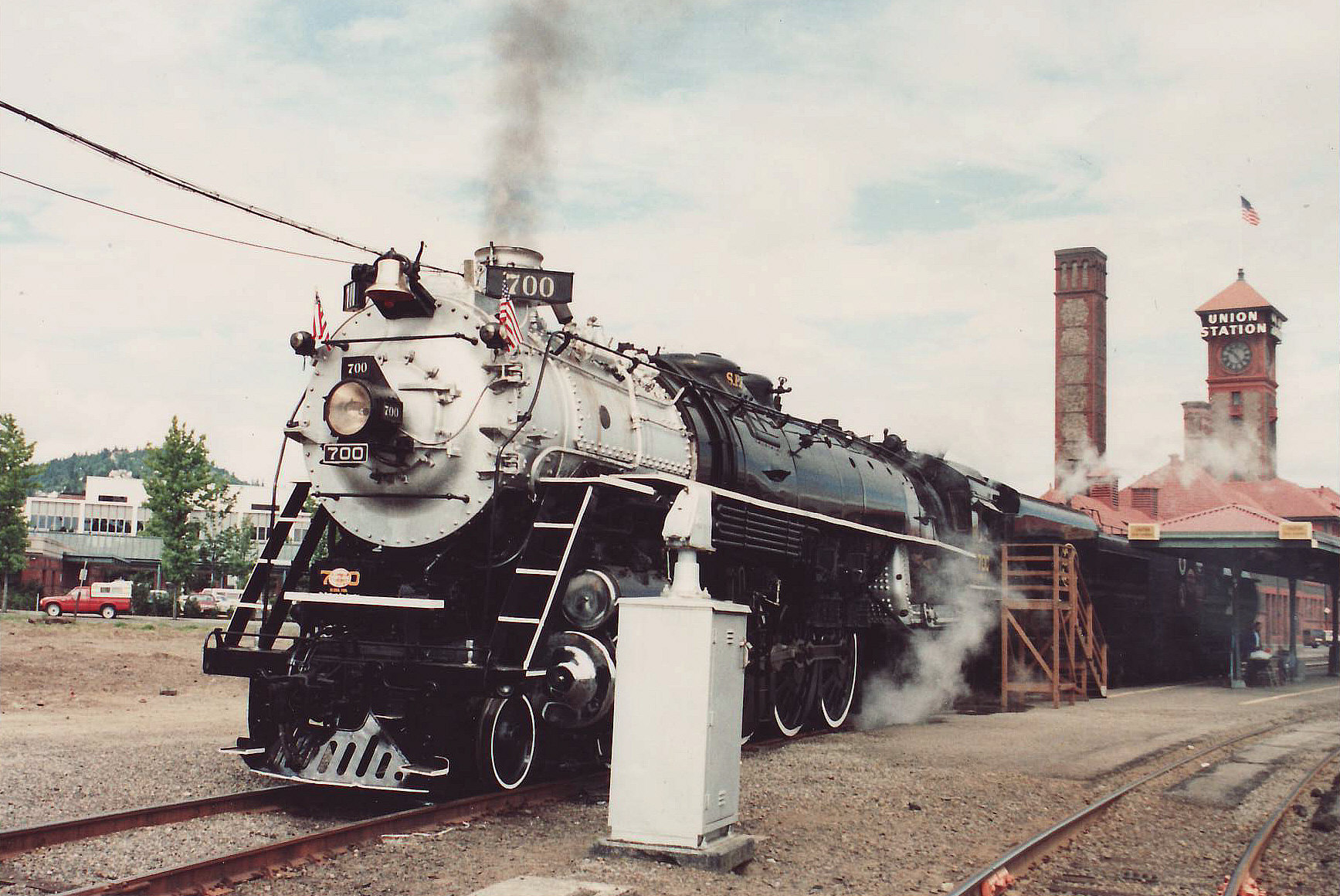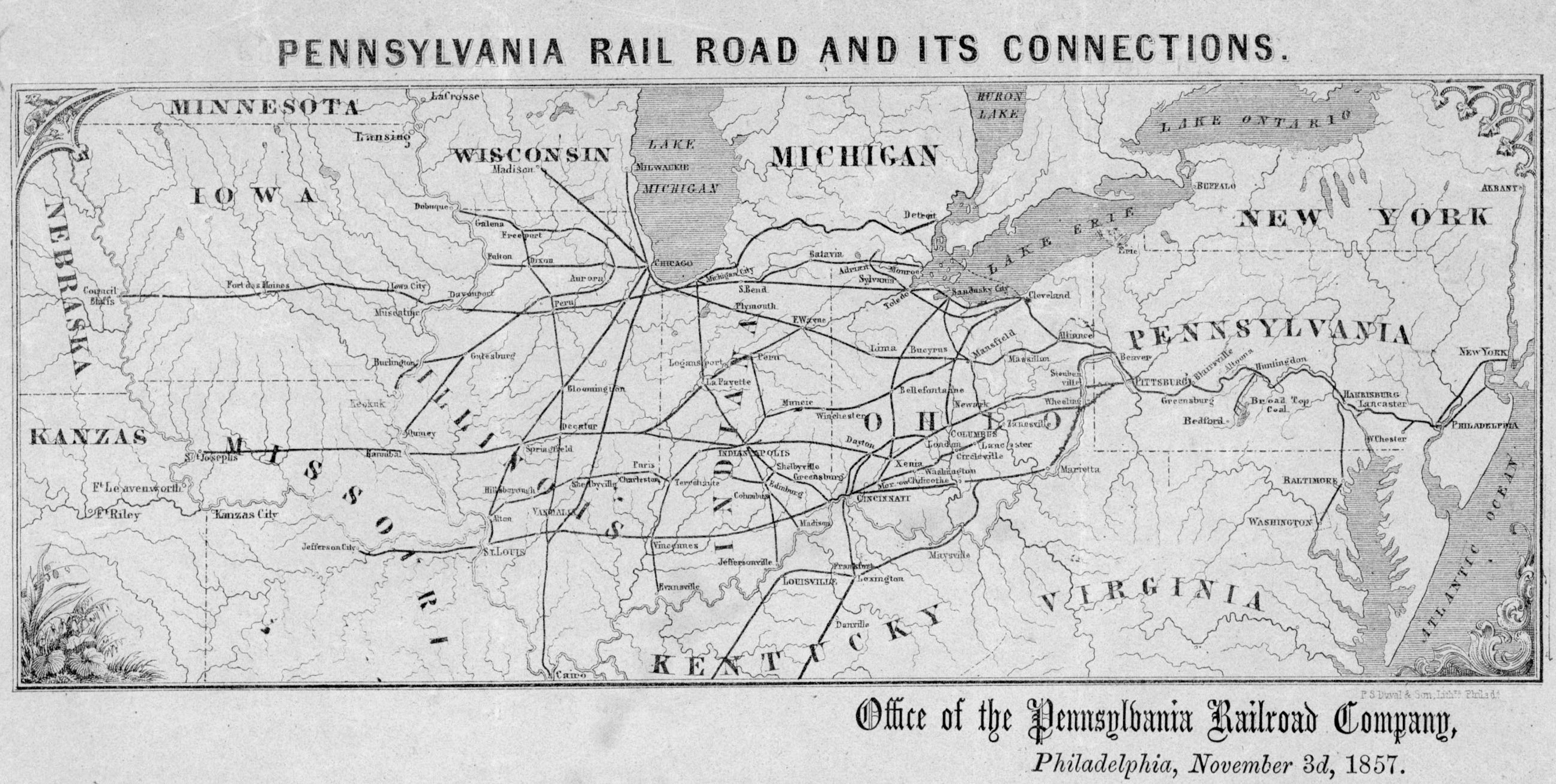|
Reading T-1 Class
The Reading T-1 was a class of 4-8-4 "Northern" type steam locomotives owned by the Reading Company. They were rebuilt from thirty "I-10sa" class 2-8-0 "Consolidation" type locomotives between 1945 and 1947. Out of the thirty rebuilt, four survive in preservation today, those being numbers 2100, 2101, 2102, and 2124, of which 2102 is operational. Construction and Design Between 1923 and 1925, the Baldwin Locomotive Works constructed fifty I-10sa class locomotives (Nos. 2000-2049) for the Reading Company (RDG) in Pennsylvania. The I-10sa’s generated a tractive effort of over , as compared to of the railroad's 2-8-0s built in the 19th century. The consolidations were solely used for heavy freight service on the RDG's branch lines, as well as the mainline on occasion. Prior to the end of World War II, the RDG decided to create larger and more powerful locomotives than their 2-8-0, 2-8-2, and 2-10-2 locomotives to haul their growing freight traffic. While the war was nearing its en ... [...More Info...] [...Related Items...] OR: [Wikipedia] [Google] [Baidu] |
Baldwin Locomotive Works
The Baldwin Locomotive Works (BLW) was an American manufacturer of railway locomotives from 1825 to 1951. Originally located in Philadelphia, Pennsylvania, it moved to nearby Eddystone, Pennsylvania, Eddystone in the early 20th century. The company was for decades the world's largest producer of steam locomotives, but struggled to compete when demand switched to diesel locomotives. Baldwin produced the last of its 70,000-plus locomotives in 1951, before merging with the Lima Locomotive Works, Lima-Hamilton Corporation on September 11, 1951, to form the Baldwin-Lima-Hamilton Corporation. The company has no relation to the E.M. Baldwin and Sons of New South Wales, Australia, a builder of small diesel locomotives for sugar cane railroads. History: 19th century Beginning Matthias W. Baldwin, the founder, was a jeweler and whitesmith, who, in 1825, formed a partnership with machinist David H. Mason, and began making bookbinders' tools and cylinders for calico printing. Baldwin t ... [...More Info...] [...Related Items...] OR: [Wikipedia] [Google] [Baidu] |
Firebox (steam Engine)
In a steam engine, the firebox is the area where the fuel is burned, producing heat to boil the water in the boiler. Most are somewhat box-shaped, hence the name. The hot gases generated in the firebox are pulled through a rack of tubes running through the boiler. Steam locomotive fire tube firebox In the standard steam locomotive fire-tube boiler, the firebox is surrounded by water space on five sides. The bottom of the firebox is open to atmospheric pressure, but covered by fire grates (solid fuel) or a firing pan (liquid fuel). If the engine burns solid fuel, like wood or coal, there is a grate covering most of the bottom of the firebox to hold the fire. An ashpan, mounted underneath the firebox and below the grates, catches and collects hot embers, ashes, and other solid combustion waste as it falls through the grates. In a coal-burning locomotive, the grates may be shaken to clean dead ash from the bottom of the fire. They are shaken either manually or (in larger locomoti ... [...More Info...] [...Related Items...] OR: [Wikipedia] [Google] [Baidu] |
Philadelphia
Philadelphia ( ), colloquially referred to as Philly, is the List of municipalities in Pennsylvania, most populous city in the U.S. state of Pennsylvania and the List of United States cities by population, sixth-most populous city in the United States, with a population of 1,603,797 in the 2020 United States census, 2020 census. The city is the urban core of the Philadelphia metropolitan area (sometimes called the Delaware Valley), the nation's Metropolitan statistical area, seventh-largest metropolitan area and ninth-largest combined statistical area with 6.245 million residents and 7.379 million residents, respectively. Philadelphia was founded in 1682 by William Penn, an English Americans, English Quakers, Quaker and advocate of Freedom of religion, religious freedom, and served as the capital of the Colonial history of the United States, colonial era Province of Pennsylvania. It then played a historic and vital role during the American Revolution and American Revolutionary ... [...More Info...] [...Related Items...] OR: [Wikipedia] [Google] [Baidu] |
Jersey City, New Jersey
Jersey City is the List of municipalities in New Jersey, second-most populousTable1. New Jersey Counties and Most Populous Cities and Townships: 2020 and 2010 Censuses New Jersey Department of Labor and Workforce Development. Accessed December 1, 2022. city (New Jersey), city in the U.S. state of New Jersey, after Newark, New Jersey, Newark.The Counties and Most Populous Cities and Townships in 2010 in New Jersey: 2000 and 2010 , United States ... [...More Info...] [...Related Items...] OR: [Wikipedia] [Google] [Baidu] |
National Railway Historical Society
The National Railway Historical Society (NRHS) is a non-profit organization established in 1935 in the United States to promote interest in, and appreciation for the historical development of Rail transport, railroads. It is headquartered in Philadelphia, Pennsylvania, and organized into 16 regions and 170 local chapters located in the United States, Canada, and the United Kingdom. The NRHS sponsors the popular RailCamp summer orientation program in partnership with Amtrak and the National Park Service, offering high school youth hands-on experience in the railroad industry. National organization History The NRHS was formed in Baltimore, Maryland, on August 18, 1935, when railfans from Lancaster, Pennsylvania, Philadelphia, Trenton, New Jersey, and New York City gathered there for a farewell excursion on the then soon-to-be-abandoned Washington, Baltimore and Annapolis Electric Railway. Officers from railfan clubs in those cities decided to merge and form a national organ ... [...More Info...] [...Related Items...] OR: [Wikipedia] [Google] [Baidu] |
Steel Mill
A steel mill or steelworks is an industrial plant for the manufacture of steel. It may be an integrated steel works carrying out all steps of steelmaking from smelting iron ore to rolled product, but may also be a plant where steel semi-finished casting products are made from molten pig iron or from scrap. History Since the invention of the Bessemer process, steel mills have replaced ironworks, based on puddling or fining methods. New ways to produce steel appeared later: from scrap melted in an electric arc furnace and, more recently, from direct reduced iron processes. In the late 19th and early 20th centuries the world's largest steel mill was the Barrow Hematite Steel Company steelworks located in Barrow-in-Furness, United Kingdom. Today, the world's largest steel mill is in Gwangyang, South Korea. Integrated mill An integrated steel mill has all the functions for primary steel production: * iron making (conversion of ore to liquid iron), * steel maki ... [...More Info...] [...Related Items...] OR: [Wikipedia] [Google] [Baidu] |
Steam Generator (boiler)
A steam generator is a form of low water-content boiler (steam generator), boiler, similar to a flash steam boiler. The usual construction is as a spiral coil of water-tube boiler, water-tube, arranged as a single, or monotube boiler, monotube, coil. Circulation is once-through and pumped under pressure, as a forced-circulation boiler. The narrow-tube construction, without any large-diameter drums or tanks, means that they are safe from the effects of boiler explosion, explosion,This safety from explosion is due to two causes. Firstly, small diameter tubes are inherently stronger than large tubes of the same construction, as was first appreciated by William Fairbairn in the mid-19th century. Secondly, the low water-content means that there is relatively little volume of water per area of heating surface (i.e. boiler power). As the destructive energy of a boiler explosion is largely due to the sudden release of this energy, and proportional to water volume, a low water-content boile ... [...More Info...] [...Related Items...] OR: [Wikipedia] [Google] [Baidu] |
Pennsylvania Railroad
The Pennsylvania Railroad ( reporting mark PRR), legal name as the Pennsylvania Railroad Company, also known as the "Pennsy," was an American Class I railroad that was established in 1846 and headquartered in Philadelphia, Pennsylvania. At its peak in 1882, the Pennsylvania Railroad was the largest railroad (by traffic and revenue), the largest transportation enterprise, and the largest corporation in the world. Over its existence, Pennsylvania Railroad acquired, merged with, or owned part of at least 800 other rail lines and companies. At the end of 1926, it operated of rail line;This mileage includes companies independently operated. PRR miles of all tracks, which includes first (or main), second, third, fourth, and sidings, totalled 28,040.49 at the end of 1926. in the 1920s, it carried nearly three times the traffic as other railroads of comparable length, such as the Union Pacific and Atchison, Topeka & Santa Fe railroads. Its only formidable rival was the New York Centra ... [...More Info...] [...Related Items...] OR: [Wikipedia] [Google] [Baidu] |
North Pennsylvania Railroad
North Pennsylvania Railroad was a railroad company which served Philadelphia, Montgomery County, Bucks County and Northampton County in Pennsylvania. It was formed in 1852, and began operation in 1855. The Philadelphia and Reading Railway, predecessor to the Reading Company, leased the North Pennsylvania in 1879. Its tracks were transferred to Conrail and the Southeastern Pennsylvania Transportation Authority (SEPTA) in 1976. History The company incorporated on April 8, 1852, as the Philadelphia, Easton and Water Gap. Construction began on June 16, 1853; the company changed its name to the North Pennsylvania Railroad on October 3 that year. The new name reflected the grand (and unrealized) ambitions of the company to extend all the way across Pennsylvania to Waverly, New York and a junction with the Erie Railroad. The railway opened between Front and Willow Streets, Philadelphia and Gwynedd on July 2, 1855, a distance of . On October 7 the Doylestown Branch opened to D ... [...More Info...] [...Related Items...] OR: [Wikipedia] [Google] [Baidu] |
Western Maryland J-1 Class
The Western Maryland J-1 class, also known as the Potomac, was a class of twelve 4-8-4 "Potomac" (Northern) type steam locomotives built by the Baldwin Locomotive Works in 1947. They were operated by the Western Maryland Railway (WM) in revenue service until the mid-1950s. Like most railroads in the South, the WM did not choose the more common name "Northern", going with the name "Potomac" for their 4-8-4s instead. They were built to haul freight on the WM mainline and all were retired by 1954. History The Western Maryland Railway (WM) was the last North American railroad to adopt the 4-8-4 "Northern" type, and as a railroad that primarily ran within the Southeastern United States, the WM chose to call their 4-8-4s "Potomacs", as named after the Potomac River. These new locomotives were the last new steam locomotives the WM purchased, and as such, they were very modern, efficient and powerful, as well as having relatively large boilers. They also held Timken roller bearings ... [...More Info...] [...Related Items...] OR: [Wikipedia] [Google] [Baidu] |






